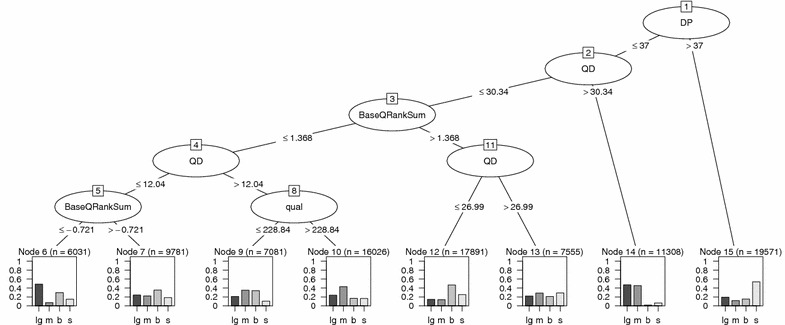Fig. 5.

Decision tree diagram showing most discriminative annotations in classification of different categories of common variants identified in proband. Rectangular terminal nodes indicate fractions of variants (percentage) classified by the rules in each branch of the binary tree. Variable n indicates the number of samples from the training set assigned to that node. Node is associated with a class label of the most prevalent variant class. For example node 15 is associated with SHRiMP-GATK variants. Variant class identified by LifeScope-GATK is denoted by lg; SHRiMP-GATK is denoted by s; MAQ-GATK is denoted by m and BFAST-GATK by b. Tree nodes represented by ellipses show GATK variant annotations which were the most important in classifying the variants at each subsequent level. Classification rules are indicated by less or equal than and greater than conditions applied on a threshold value of the parameter. The diagram shows a considerable fraction of SHRiMP-GATK variants in node 15 characterized by larger depth of coverage (DP > 37). Large fraction of MAQ-GATK (m) variants are characterized by higher values of quality by depth (QD) (node 14) and have better GATK-assigned quality (see node 10). A group of LifeScope-GATK (lg) variants (node 14) are characterized by higher quality by depth (QD > 30.34). Another group (node 6) has lower QD and a negative value of BaseQRankSum, indicating poorer base quality support for alternative alleles. A tree size while running C50 algorithm was controlled constraining a split by minimum number of cases (parameter minCases) equal to 5000
